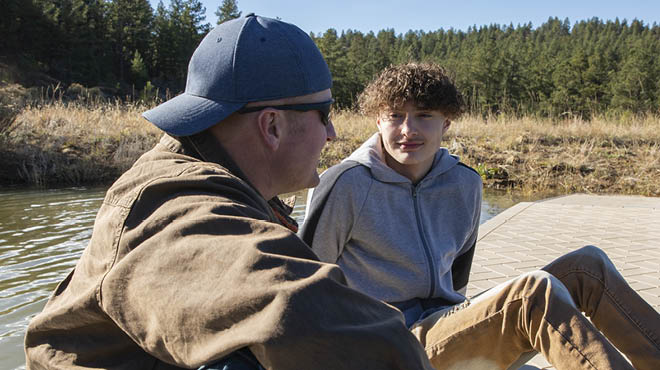Posted By

Adel Zurob, M.D.
Intensive Care (Critical Care), Pulmonology (Lungs), Sleep Medicine

Ali Zaied, M.D.
Intensive Care (Critical Care), Pulmonology (Lungs)
Recent Posts
-

-

-
 Patient StoriesPatient recovering after COVID-19 hospitalization, extracorporeal membrane oxygenation supportFebruary 18, 2021
Patient StoriesPatient recovering after COVID-19 hospitalization, extracorporeal membrane oxygenation supportFebruary 18, 2021
Using robotic technology to diagnose, stage lung cancer

Lung cancer is the second most common cancer and the No. 1 cause of cancer deaths worldwide. In 2022, about 236,000 people were diagnosed with lung cancer, and about 130,000 people died from the disease in the U.S.
Lung cancer doesn't always cause symptoms in its earliest stages. More than half of people with the disease die within a year of being diagnosed. That's why early screening and treatment of lung cancer are critical.
A new medical technology called robotic-assisted bronchoscopy acts like a robotic GPS to diagnose lung cancer at its earliest stages when it's easier to treat and cure.
What is robotic-assisted bronchoscopy?
Your lungs have a complex, interwoven network of airway passages. This includes your bronchial tubes, bronchi, bronchioles and alveoli. Nodules are tiny abnormal growths in the lungs and are potentially cancerous. A sample, called a biopsy, is collected from the nodule to diagnose and stage lung cancer.
During a bronchoscopy, a thin tube is passed through the nose or mouth into the lungs. There is a light at the end of the tube, and the physician uses it to examine abnormal areas of the lungs. The scope used during a standard bronchoscopy cannot reach all areas of the lungs because it's too big or inflexible to navigate the narrow airways.
Robotic-assisted bronchoscopy uses a smaller and more flexible scope that can get into tiny airways. The patient receives an anesthetic while the physician moves the small scope into the lung using a game controller-like device. The physician can examine the lungs, reach targets set through a CT scan and precisely collect tissue biopsies in or near the airway that may be lung cancer.
What are the benefits of robotic-assisted bronchoscopy?
Benefits of robotic-assisted bronchoscopy include:
- It's a minimally invasive procedure with no incisions and lower risk of complications. The procedure usually is completed as an outpatient day procedure, and patients can return to daily activities quickly with little or no restrictions.
- Patients need only one procedure and anesthetic to receive a diagnosis and stage of the disease. This decreases the time from diagnosis to treatment so patients can receive the care they need faster.
- The procedure can access lung nodules that previously required more invasive biopsy techniques or even surgery. As part of a multicenter trial, Mayo Clinic found that 98% of lung nodules can be reached even when touching critical organs like the heart.
- Finally, robotic-assisted bronchoscopy offers better precision and control for physicians to biopsy tissue in or near the airway. The robot has greater flexibility and range of motion compared to human hands. This is less disruptive to adjoining tissue and leads to fewer complications.
Looking ahead
Mayo Clinic scientists are exploring new ways to use robotic-assisted bronchoscopy to treat nodules and eliminate lung cancer. This could be done by locating and removing nodules at one time, or through delivering medications, like chemotherapy or engineered biotherapies, directly to the cancerous area.
Watch this video to learn more about robotic-assisted bronchoscopy:
Talk with your health care team if you have any symptoms of lung cancer, like a new cough that doesn't subside, changes in chronic cough, shortness of breath or coughing up blood. Then ask a pulmonologist or oncologist if robotic-assisted bronchoscopy is right for you.
Adel Zurob, M.D., and Ali Zaied, M.D., are pulmonologists and intensivists in Eau Claire, Wisconsin.


